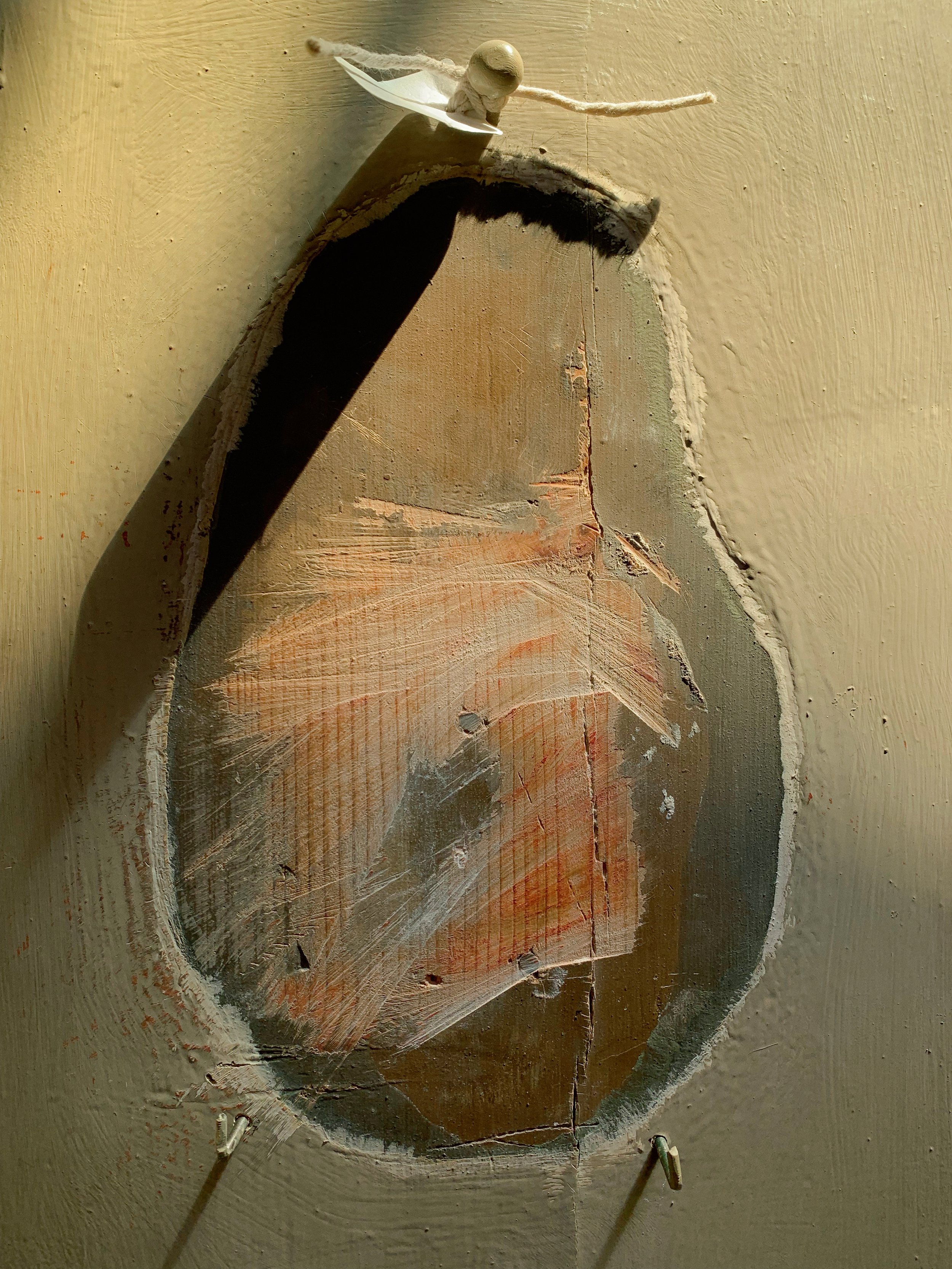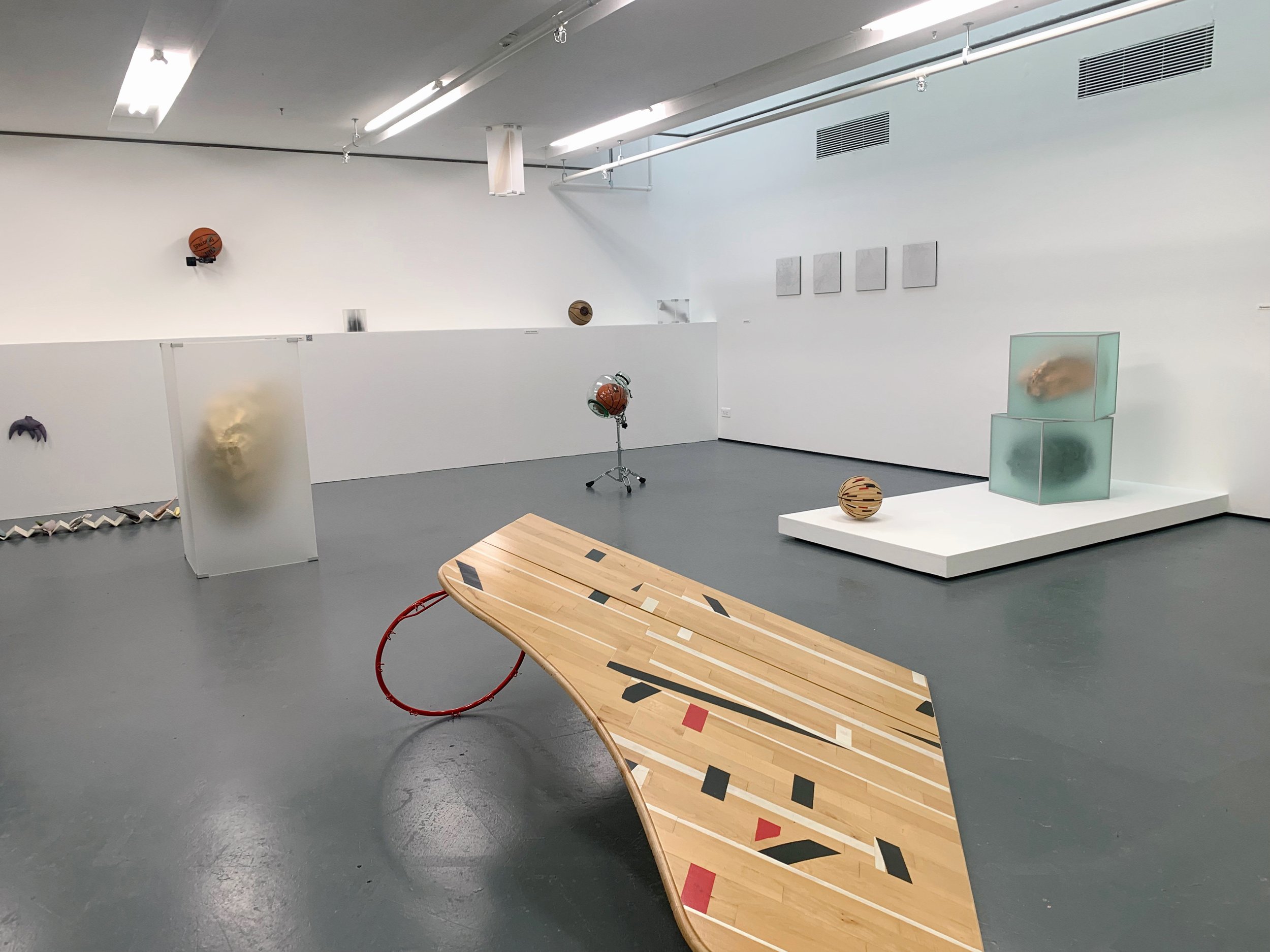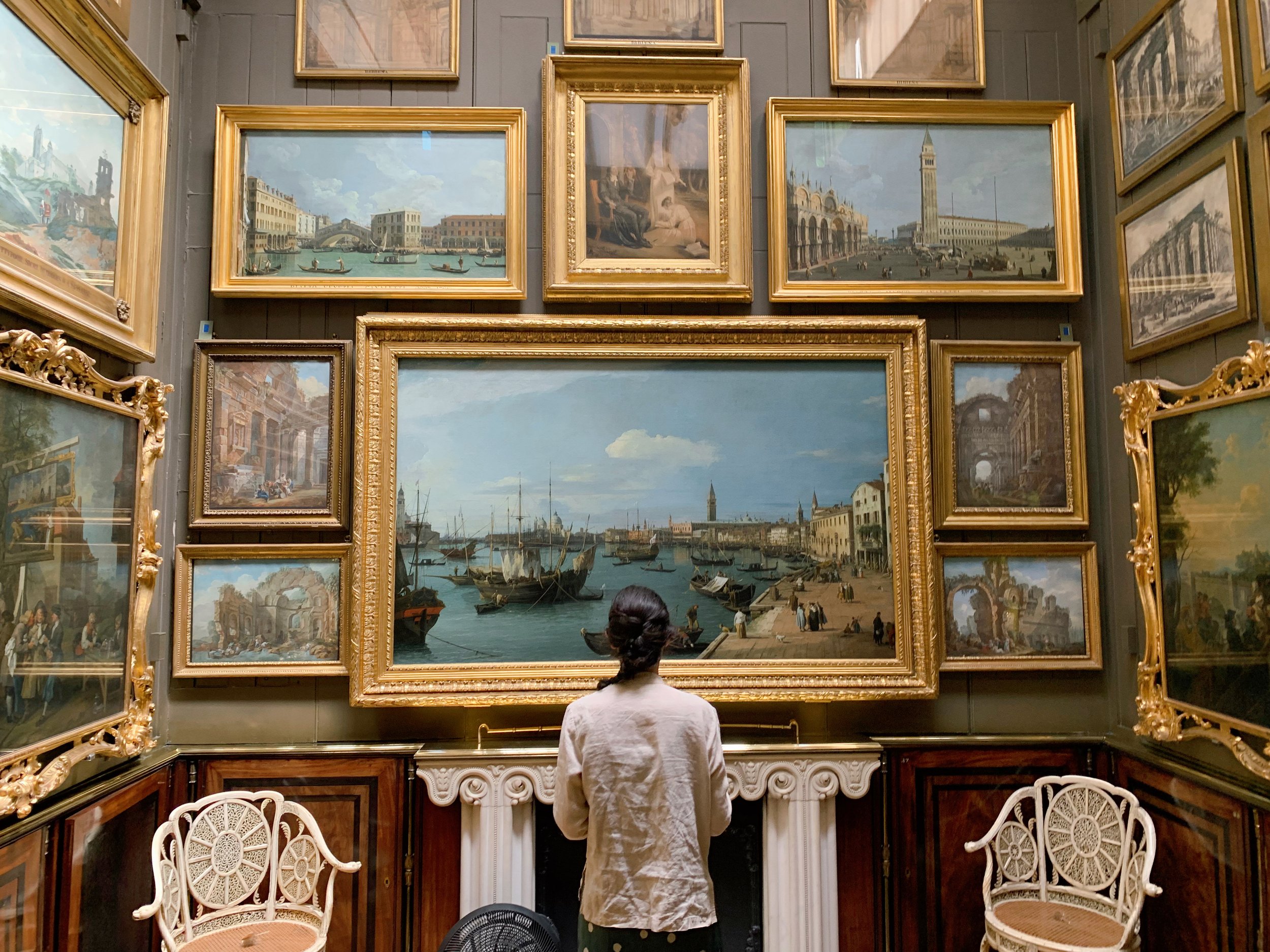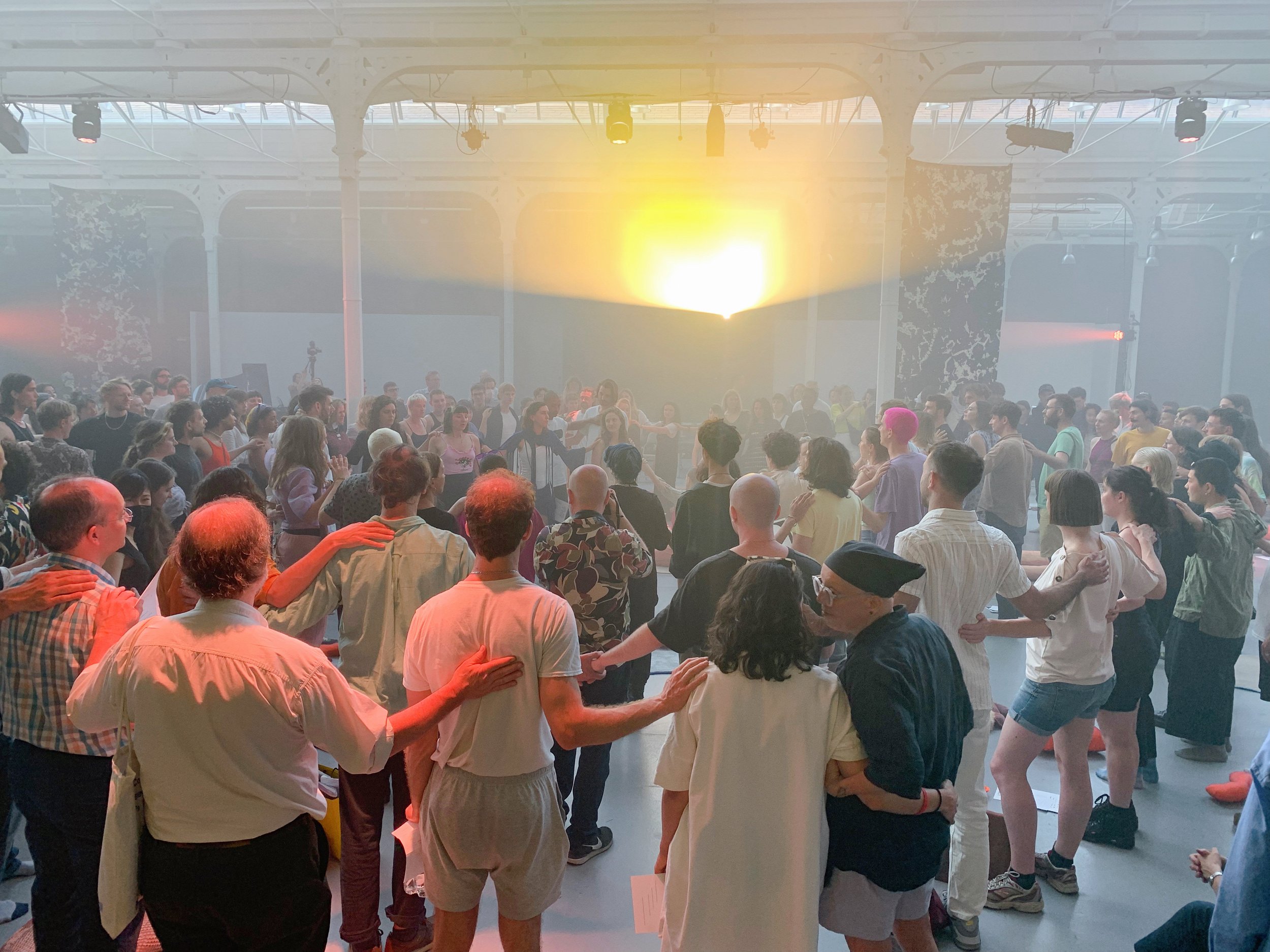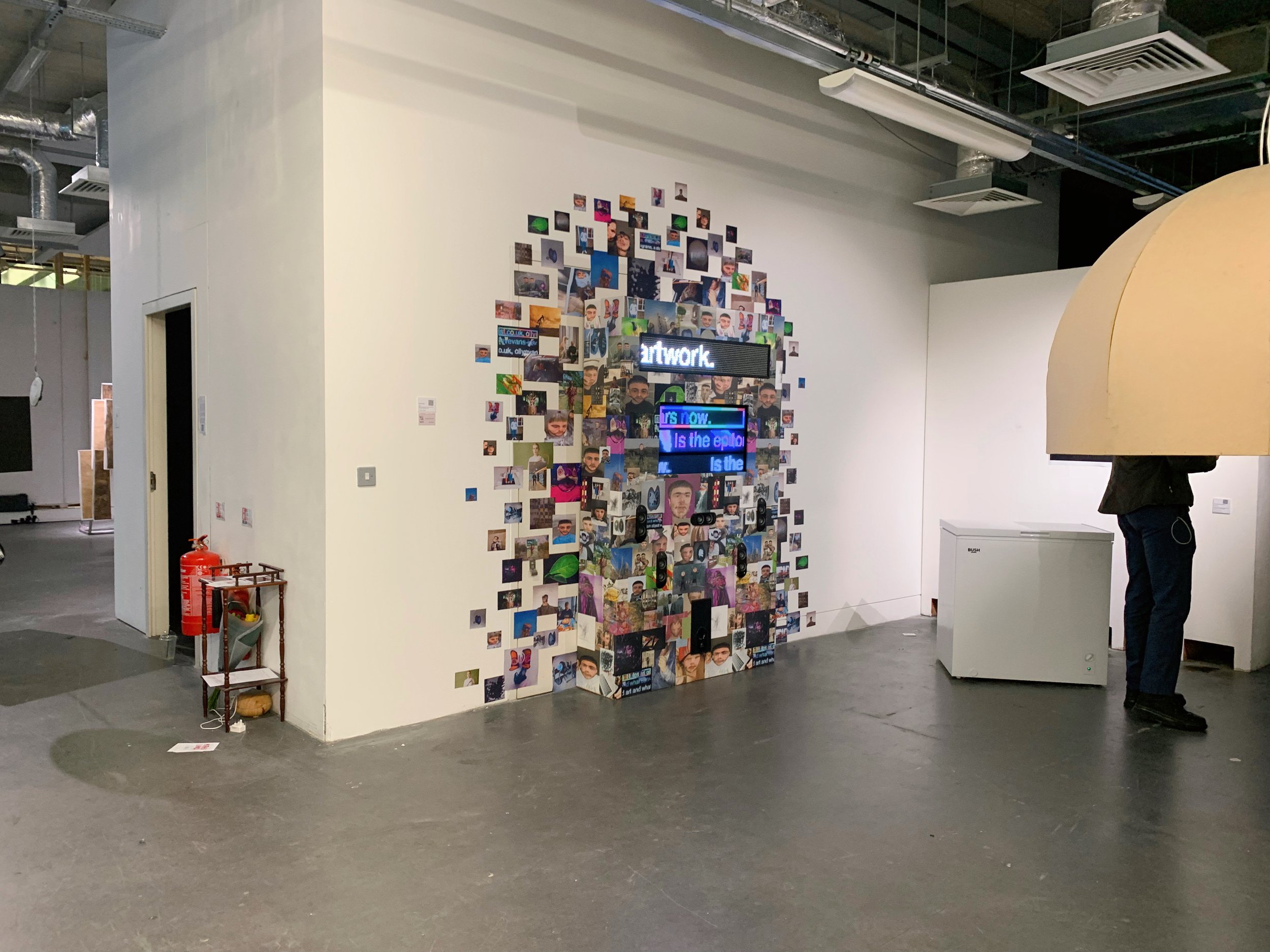27: The Big Sad
Dear ICA,
I would like to start by extending my deepest gratitude for the wonderful cultural programming and warm hospitality you provide. I find myself there often and can tell many others do as well. I’m writing today to specifically acknowledge and address the recent 3-day Choreographic Devices conference. It is so rare for this kind of programming to be made public and accessible. ICA, befitting its name, has truly succeeded in creating the conditions for a sustained and polymodal exploration of this capacious concept and suite of related concerns. The duration gives the time and space to deepen conversations and relationships. It made me happy to see the ICA filled with so many interested and engaged participants throughout the weekend. I came to almost all the sessions, and the ones I missed were due to the allure of the film programming going on simultaneously, the beautiful weather in St James Park and my inability to sustain myself on fried broad beans, crisps and olives, as much as I enjoy all of these snacks. It would be wonderful if there was a more substantial food program to accompany the substantial arts program.
For some reason I’m imagining an Italian restaurant, though I could also imagine that might be a little too complicated. Maybe a pared-down vegetarian Ethiopian offering with injera? Or a partnership with one of the local sourdough operations? Sandwiches from Jolene? E5 maybe??
Culinary possibilities aside, I sincerely hope you will continue to program these kinds of dynamic, performative, multi-day, extra-academic events. Where else can one see keyon gaskin give a lap dance to Irit Rogoff to the theme of Power Rangers and then D. Graham Burnett give a visual lecture on the long history of attention economies?
Kind thanks,
Perry
I went to the opening night of The Big Sad. The 2022 edition of the London Contemporary Music Festival at the cavernous Woolwich Works, a new art-washed frontier of development served by the recently opened Elizabeth line. It was perhaps curiosity that led me there, or inertia, or just the will towards distraction. The Big Sad was programmed in 5 installments; INCHOATE BUZZ, Sad and Ruined, Ruined and Exhausted, Exhausted and Hysterical, and Hysterical and Happy. An arc intimating a false promise if not an earnest descent into madness.
INCHOATE BUZZ felt to me like an aimless and apathetic circulation of bodies, in a large blue-white lit room that periodically coalesced around moments of drama, and almost equally concerned with the voyeuristic reactions of the spectators. Something akin to a devirtualized instagram, occupying the familiar register of flattened, distracted affect moving over smooth surfaces, asking little of its audience-participants; simply their presence, photo documentation and flitting attention. Streams of internal monologue wove into looped samples, haunting the space with a baroque and compounding anxiety while bodies moved in studied exhibition. Performers moved through the moving crowds shifting gazes and producing self conscious moments of physical intimacy. Loose streams of soft voices felt like guided meditations or diaries on mental and ecological health. I appreciated the looseness of the proceedings, but left feeling unfulfilled and without many recollections.
The catalogue text reads:
This year, being broken takes centre stage. We cry, we pine, we crack up and rage; we smile vacantly into the middle distance; we hole ourselves up in bedrooms; we fail to sleep; we scroll.
Melancholia is 'the fundamental passion of the hyperreal order,' writes Alex Mazey in his book Sad Boy Aesthetics (2021). A passion born of an infatuation with the fertile and forlorn plains that exist between reality and desire. A passion for the heroic fail. For the artistic ruin. For the simulacra. For what Baudrillard called the 'vertiginous seduction of a dying system'
We hymn this apocalyptic sublime throughout ICMF 2022. Inhale it in Rebecca Saunders's vaporous work for two percussionists (17 June), which takes as its starting point Beckett's vision of a library that dissolves into dust. Slope along to it in Oliver Leith's etherised new orchestral parade (18 June). Allow our eyes to be pecked out by it in Katalin Ladik's talon-sharp poems about ice birds and winged black horses (16 June). Let filmmaker Stom Sogo fuck you up (18 June).
We mourn the dilapidations through three newly commissioned requiems - all raucous: from turntablist Mariam Rezaei (18 June), percussionist improviser Crystabel Riley (17 June) and composer Claudia Molitor and her ensemble of single-use plastics (19 June). Revel in the decay through the sonic breakdowns of Lolina (16 June) and queens of scuzz Ewa Justka (19 June) and Clara lannotta (17 June). Submerge ourselves in the radiant cold of James Richards's latest film (16 June). Bask in the brain-melting decompositions of 8l-year-old legend Roscoe Mitchell (18 June).
There's succour here in the slumber-party intimacy of INCHOATE BUZZ, and the entangled experiments of Fernanda Muñoz-Newsome, SERAFINE1369, Mica Levi, Eve Stainton, Nkisi and Isabel Muñoz-Newsome (15 June). In the gyrations and duets of Marikiscrycrycry and Bianca Scout (16 June). Slow down. Give in to the horizontal plane. Slip under the covers with Tyshawn Sorey's hypnagogic cello concerto (18 June). Let Frank Denyer's three baroque flutes guide you there (16 June). Lay flowers at Triad God's shrine (17 June).
Or just sink even further: into the gurglings of Evan Johnson's bass flute (16 June), into the throbbing emptiness of Aura Satz and Sarah Davachi lockdown film (19 June), into the geological landslides of Joèlle Léandre's double bass (19 June).
Elsewhere we head for melancholy's new home in code. Surf the digital detritus, and its residue in your psyche, in Ed Fornieles and Gretchen Lawrence's vertiginous film (16 June). Succumb to AI: they'll lead you to the ancient Mayans, courtesy of Debit (17 June). Let Rachel Rose show you round the zone of deathfulness (17 June). Do you trust us?, asks Fluxus composer Ben Patterson (18 June).
Or drag the duvet back over your head and let our cast of Sad Boys console you: in the form of love-hate songs from electronic producer No Home (18 June) and singer-songwriter Jerskin Fendrix (16 June).
There's room for raging: on Casio, gong and autotuned orchestra with Cerith Wyn Evans and Elvin Brandhi (18 June) and through the comic-strip collages of Christian Marclay (19 June). Rage turns to laughter in the anthropocene camp of Caspar Heinemann's poems (17 June), Nam June Paik's tragicomic provocation (16 June) and the keyboard-pummeling sound-satires of 19th century African-American virtuoso Thomas Wiggins, performed by Pat Thomas (19 June). And from laughter come tears. Bittersweet tears of joy in Musarc's vivid reimaginings of the Gaelic psalm-singing tradition (19 June) and heartache in a classic from Arvo Pärt (17 June). Let the Thames wash them away in Tom Foulsham's lament for three sailing brass players (19 June).
Exploring Sad Boys, sweet melancholy and the affective turn, through nine new commissions and eighteen premieres, in music, dance, poetry and film - through requiems, cryogenics labs, meme poetics, psalm-singing and the sound of the ancient Mayans - THE BIG SAD will show how the tools of relinquishment and ruination, how states of loss and exhaustion, can be turned on their head, spur recovery, intimacy and joy. Allow yourself to fall into "the mists and drizzle of its downer haze' (Mazey, Sad Boy Aesthetics).
The writing seems hallucinatory, disjunctive, skimming surfaces like tabular browsing. It points towards a therapeutic horizon which we could locate in the nascent, pandemic-affected therapeutic turn, which we could then perhaps situate in the larger trend towards remediative aesthetics that characterize institutional arts response to austerity, financialization and the dissolution of social—and for that matter, general life.
It made me think about the chillingly lucid polemical essay from Jonathan Crary’s Scorched Earth which I’m currently reading. I’ll quote at length from the introduction:
If there is to be a livable and shared future on our planet, it will be a future offline, uncoupled from the world-destroying systems and operations of 24/7 capitalism. In whatever endures of the world, the grid, as we live within it today, will have become a fractured and peripheral part of the ruins on which new communities and interhuman projects may possibly arise. If we’re fortunate, a short-lived digital age will have been overtaken by a hybrid material culture based on both old and new ways of living and subsisting cooperatively. Now, amid intensifying social and environmental breakdown, there is a growing realization that daily life overshadowed on every level by the internet complex has crossed a threshold of irreparability and toxicity. More and more people know or sense this, as they silently experience its damaging consequences. The digital tools and services used by people everywhere are subordinated to the power of transnational corporations, intelligence agencies, criminal cartels, and a sociopathic billionaire elite. For the majority of the earth’s population on whom it has been imposed, the internet complex is the implacable engine of addiction, loneliness, false hopes, cruelty, psychosis, indebtedness, squandered life, the corrosion of memory, and social disintegration. All of its touted benefits are rendered irrelevant or secondary by its injurious and sociocidal impacts.
The internet complex has become inseparable from the immense, incalculable scope of 24/7 capitalism and its frenzy of accumulation, extraction, circulation, production, transport, and construction, on a global scale. Behaviors that are inimical to the possibility of a livable and just world are incited in almost every feature of online operations. Fueled by artificially manufactured appetites, the speed and ubiquity of digital networks maximize the incontestable priority of getting, having, coveting, resenting, envying; all of which furthers the deterioration of the world—a world operating without pause, without the possibility of renewal or recovery, choking on its heat and waste. The techno-modernist dream of the planet as a colossal worksite of innovation, invention and material progress continues to attract defenders and apologists. Most of the many projects and industries of “renewable” energy are designed for perpetuating business as usual, for maintaining devastating patterns of consumption, competition, and heightened inequality. Market-driven schemes such as the Green New Deal are absurdly pointless because they do nothing to switch off the expansion of senseless economic activity, the needless uses of electrical power, or the global industries of resource extraction incited by 24/7 capitalism.
This book is aligned with a tradition of social pamphleteering that aims to give voice to what is experienced in common, to what is known or partly known in common but is negated by an overpowering barrage of messages that insist on the unalterability of our administered lives. Many people, on a daily basis, have a visceral grasp of the immiseration of their lives and hopes, but may only have a hesitant awareness of how widely their insights are shared with others. My goal here is not to present a nuanced theoretical analysis, but, in a time of emergency, to affirm the truth of shared understandings and experiences and to insist that forms of radical refusal, rather than adaptation and resignation, are not only possible but necessary. The internet complex functions as an unending announcement of its indispensability and of the insignificance of whatever life remains unassimilable to its protocols. Its omnipresence and embeddedness within almost every sphere of personal and institutional activity makes any notion of its impermanence or post-capitalist marginalization seem unthinkable. But this impression marks a collective failure of imagination, in its passive acceptance of numbing online routines as synonymous with living. It is unthinkable only to the extent that our desires and our bonds with other peoples and species have been wounded and incapacitated.
The philosopher Alain Badiou noted that it is at this point of apparent impossibility that the conditions for insurgency arise: “Emancipatory politics always consist in making seem possible precisely that which, from within the situation, is declared to be impossible.”1 The loudest voices declaring this impossibility are those who benefit from the perpetuation of the way things are, who thrive on the uninterrupted functioning of a capitalist world. These are anyone with a professional, financial, or narcissistic stake in the ascendancy and expansion of the internet complex. How, they will ask incredulously, could we do without something on which every aspect of financial and economic life depends? Translated, this question is actually: How could we possibly do without one of the core elements of the techno-consumerist culture and economy that has brought life on earth to the edge of collapse? To have a world not dominated by the internet, they will say, would mean changing everything. Yes, precisely.
Crary’s distilled cautionary, clearly and skillfully rendered, is a sobering indictment. After falling for—or at least being open to—the false promises of platform capitalism I’ve adopted a stance more-or-less aligned with Crary’s.
It's ususally the same story. In the beginning, the platform seems full of excitement and new possibilities. Airbnb, for a very short window, had made it easier to find a place to stay in places where you don’t have friends or where a hotel is not desirable or available. All sorts of different people tried out different approaches in those early days and my initial experience of the platform was characterized by sociality and wonder. Often people didn’t even seem that concerned about the money. In a few years it became standardized, professionalized, way more expensive, and now fluctuates wildly based on market demand. Now, looking for a place to stay in Berlin for two nights midweek in the summer costs more than a month's rent just a few years ago. In many places, Airbnb has destroyed communities and made finding long-term rentals much more difficult. Perhaps more than any other platform I can think of, Airbnb has affected the entrpreneurialization of life, internalizing the market into social relations, first with housing—and hospitality, and then quickly moving into experiences.
I remember and miss the days of hospitality towards travelers, before everything had an established market value and quantified metric for reputational remuneration. There is a market now for ever-more features of our lives that overshadows or colors nearly every one of our relations and is growing towards the total financialization of everything else—to be captured and logged on the blockchain ledger in the infrastructural roll-out of web3.
Another maddening example is Google Maps, that started out as a digital map to help identify locations of interest and has since mutated into an algorithmic hellscape of obfuscation and advertising that hides the world from you and reconfigures itself constantly trying to solicit, seduce, confuse and sway you. I find the experience absolutely infuriating. This, like social, should be a public utility or commons, and not a group of sociopathic billionaires gaslighting the world.
It seems as though there are increasingly no regions outside of the power and reach of these platformed ideologies. I was having a conversation with a visiting tutor at Goldsmiths who runs an art residency on a remote archipelago in Finland and she was voicing her misgivings about these effects. She shared her own organization’s complicity in bringing about an experience economy on these remote islands which in turn is displacing her organization and undermining the ecological themes she set out to address. The velocity with which capital travels through a privately and algorithmically-networked world further inscribing and deepening socioeconomic disparity is stunning, and our most cogent critics can barely keep up.
The conversation thickened around artist residencies, which I understand as a phenomenon attending or occurring contemporaneously with the biennialization of the art world and an emergent peripatetic deterritorialized art class. Highly differentiated in its orientations, the form moves across a spectrum including; privileged retreats, shelter for homeless artists, intentional spaces of thematic and/or interdisciplinary collaboration and its unsurprising mutation towards a financialized space for professional networking. The latter being a new model I’m noticing proliferating, something like an ArtBnB that charges exorbitantly for curated exposure to contemporary-art-inflected heritage in particular locales and privileged access to regional cultural producers.
Our conversation turned towards the theme of financialization in science, and examples of a kind of ‘prospecting’ scientists perform on the frontiers of extractible land and intellectual property, in addition to the rise of proprietary planetary sensing—illustrated with a local story of black box, floating data-sensors to monitor water salinity that costs a small fortune and can only be serviced by the private company that manufactures them. I suggested that many of our socioecological ills are not suffering from a lack of data and the deferral of addressing these ills benefits from the requirement of the production—and ongoing contestation—of long term, often privatized, data analysis. Which is in no way to diminish the importance of local, long-term environmental study, especially in a supporting role to the preservation of inherited forms of regional, embodied and tacit knowledges. But rather to caution against the ongoing financialization of life (and art, and science…). It must be resisted and remediated with all of our collective energies and a hypervigilance towards the inexhaustible means and modes of capitalist recuperation.
What Woolwich and web3 share in common is an already recuperated, strategic use of the avant garde. Both have enlisted artists to capture attention and transform their infrastructural projects, through the aestheticization of previously undesirable space.
I returned the following night to The Big Sad, to see the second installment, Sad and Ruined advertised with a JPG of Dürer's first engraving on melencolia, and a text that opened with ‘Consider the Sad Boy: a familiar crest fallen figure, resurrected by the internet, given fresh spectral life by the digitally hyperreal, given even more forms of emptiness to play with, even more ways to disappear.’ I had been exploring this idea of the Sad Boy or Sad Boi in a previous essay, Deconstructing the Western Passionfruit Narrative, reading Byung-Chul Han against the cultural genesis of Drake’s Passionfruit. Sad and Ruined proved unfulfilling, but not without moments of interest and interesting conversations. The third night I couldn’t bring myself to go back to The Big Sad again, and instead went to a Jodi Dean lecture on platform capitalism as neofeudalism, which took up a lot of familiar themes overlapping with Jonathan Crary and McKenzie Wark. I found it unfulfilling, with moments of interest, and had a difficult time connecting meaningfully with anyone. A becoming-familiar register of academic inhospitality, particularly confusing in relation to subjects that require and extoll collective action.
It certainly makes me feel sad when I go to a place where people gather to discuss issues of great consequence and the atmosphere feels inhospitable, competitive, antagonistic, petty, egotistical and cliquey. With a lot of mutual concerns that I would like to think would benefit from their plural and variegated articulations getting stalled at the level of terminological disputes and intellectual property. The way familiar forces recuperate, distort and commodify even the critique of their ubiquity. Or maybe I was just in a mood.
I returned to the final night of The Big Sad, Hysterical and Happy, and was glad I did. The program culminated in a boat performance after a stutter-y, lukewarm rave and some thoughtful and moving choral pieces, with the whole crowd moving to the Thames and watching a conceptual score for moving boats and horns. I met a touring musician who’s main project was severely cancelled after a bizarre and possibly conceptual-art inflected engagement with Donald Trump and he told me he was convinced that the internet was actually a Mayan prophecy. I also met German performance artist who said they could put me in touch with their mom to rent a below Airbnb market rate apartment for a couple nights before going to Kassel for the documenta.
In between installments of The Big Sad I saw the CSM, Slade and Royal Academy graduate shows. The opening of CSM was an incredible spectacle of all their departments competing for slivers of attention, and a crowd that stole the show. The more modestly or reasonably scaled Slade and RA shows felt contiguous with The Big Sad, that is to say, in their presence I felt the rumblings of an affective or therapeutic turn. I’m already over the market-ready reactionary turn to subjective, affective abstraction that's revving up for the familiar dialectic choreography with the dull, positivistic, pedagogic, and allegedly socially-engaged virtuous art that is de rigeur. Or, ‘... a fallacy each generation reinvents and disavows, reinvents and disavows, a rocking motion.’ says Ben Lerner in The Media.
I suppose my fragmented and overwhelmed engagement operates at different and conflictual levels. There are many interesting works and practitioners in all the shows, beautiful and thoughtful sculptures, images and conceptual conceits. The central questions seem to me to be about time and its distribution.
I had a long and thankless debate with the docent volunteer at the Soane who tried to bait me into a fight about monuments and to which I replied I’m more concerned with the present material conditions for the majority of the working class and the mass extinction event that is underway, and besides, this whole city is a monument to vagaries of empire. A similar sentiment that I felt when I walked into Tate Moderns turbine hall earlier in the week and said to a friend, it's always good to remember that this experience is built on one of the most violent and brutal acts of oppression and subjugation in human history, perpetuated largely to please the appetites of Western Europe's burgeoning sweet tooth.
We found ourselves beholding young bodies sweeping grains of rice into patterns on the floor as an aestheticized and performative meditation that couldn’t help suggest the class relations that occasioned this. I suppose I can say, with no small degree of complicated and irreconcilable feelings, that I would like to keep and transform these mostly public spaces while keeping their sordid histories in the front of our minds as we collectively reimagine other ways of relating to our ecological selves.
Addendum:




